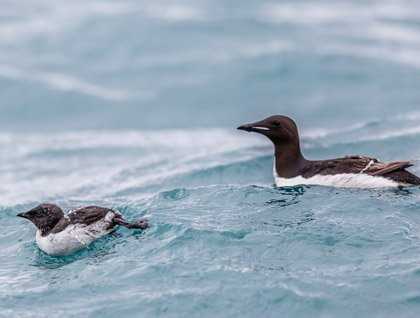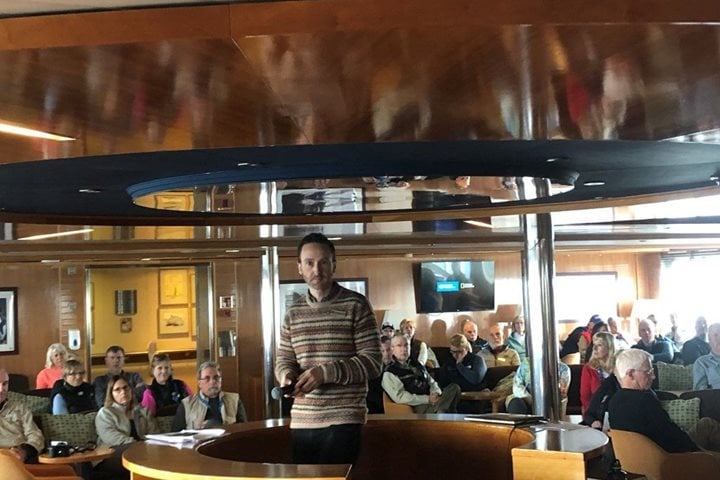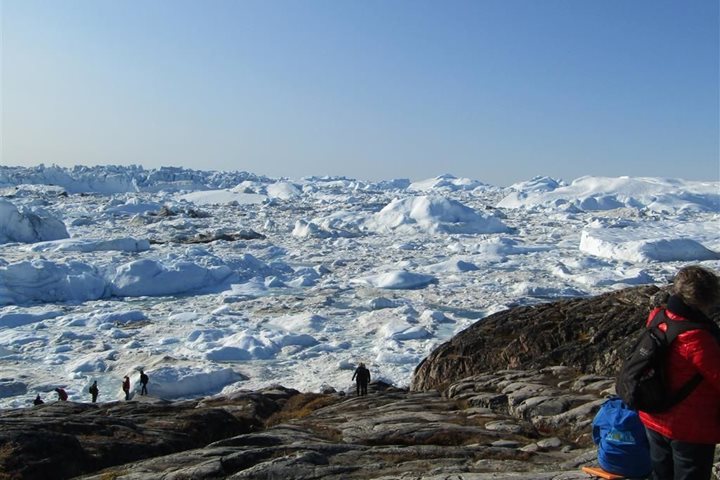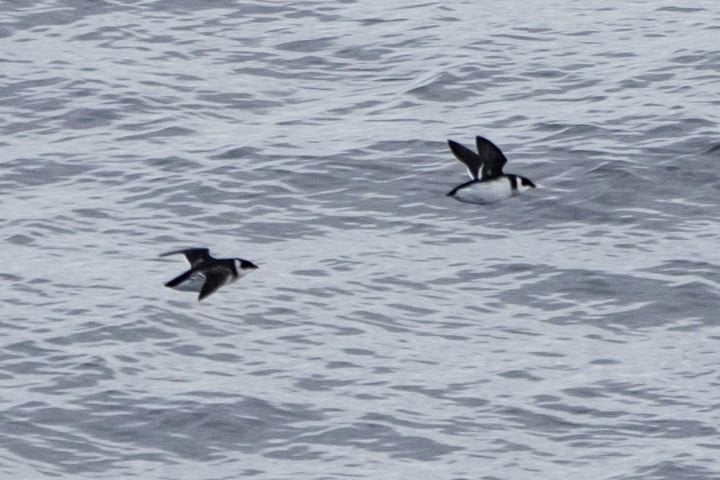We spent the morning on National Geographic Explorer around the northwestern end of Bylot Island, edged by Eclipse Sound. Bylot Island, a bird sanctuary, with beautiful cliffs around Cape Hay, was perfect for Zodiac cruising and kayaking. Black-legged kittiwakes and thick-billed murres return summer after summer to this spectacular vertical edge, a successful breeding site for both.
It is here high on the cliffs of Cape Hay that a truly remarkable Arctic leap-of-faith occurs. Two to four weeks after hatching on a precarious ledge, chicks weighing twenty percent of an adult, are called to sea far below them by their fathers, long before they can actually fly. The flightless journey to the sea to join their dad is fraught with danger, as some chicks are dropping to the water from heights hundreds of feet above sea level. Some chicks do not survive the impact with the surface, but those that do will go to sea and be cared for and fed by the male until the chick is independent.
Several groups of curious harp seals inspected our fleet of Zodiac cruisers, craning their necks for a better look. The harp seals were surrounded by black-legged kittiwakes dipping repeatedly into the water for a meal of small invertebrates. As the ship slowly sailed alongside these massive bird cliffs, a polar bear was sighted high on a ridge, a lone sentinel.
Afternoon found National Geographic Explorer safely anchored at the mouth of the Kilutea River on Baffin Island. Small groups of hikers quickly fanned out to explore the wild open tundra and elevated beach terraces formed as glaciers retreated here. Scattered bones of bowheads, belugas and walrus are testament to the idea that these raised beaches were once at or below current sea level. Arctic fox, snow geese and a mother polar bear with cub all left recent tracks to reaffirm that life in the Arctic is along the edges.
May there always be wild open spaces to explore ….








